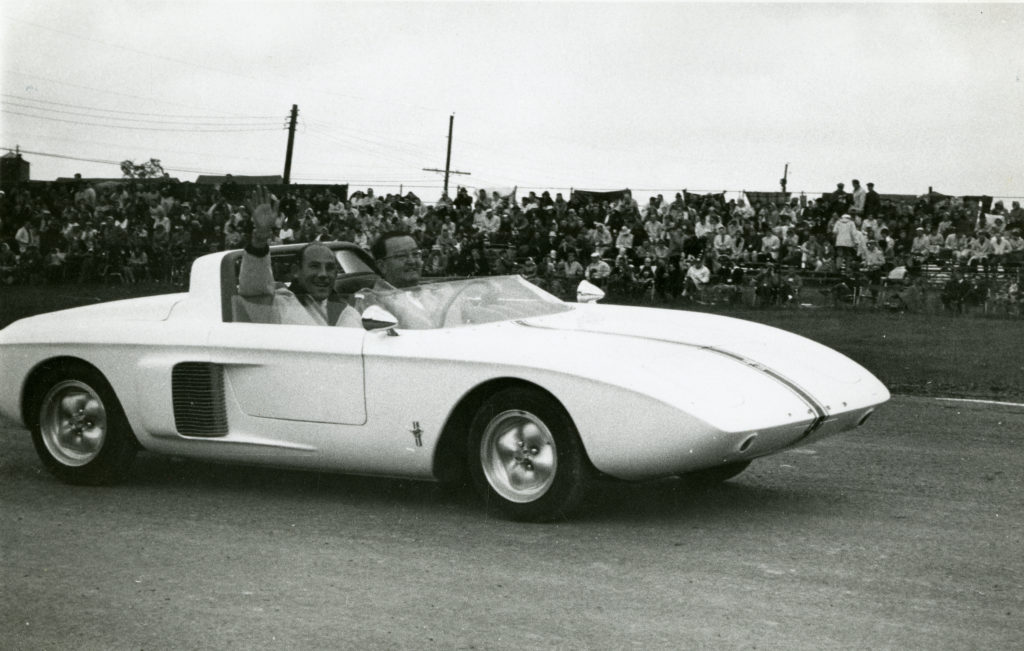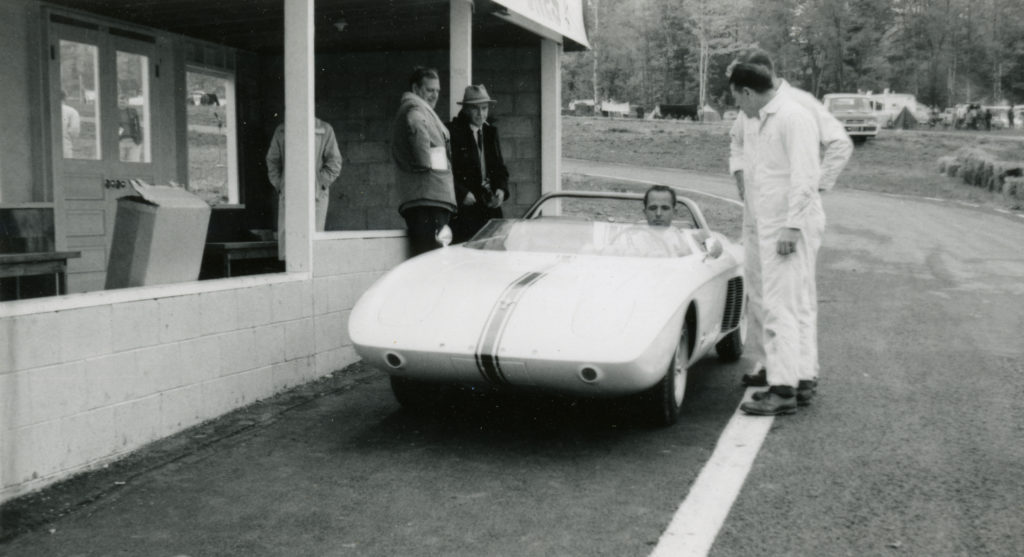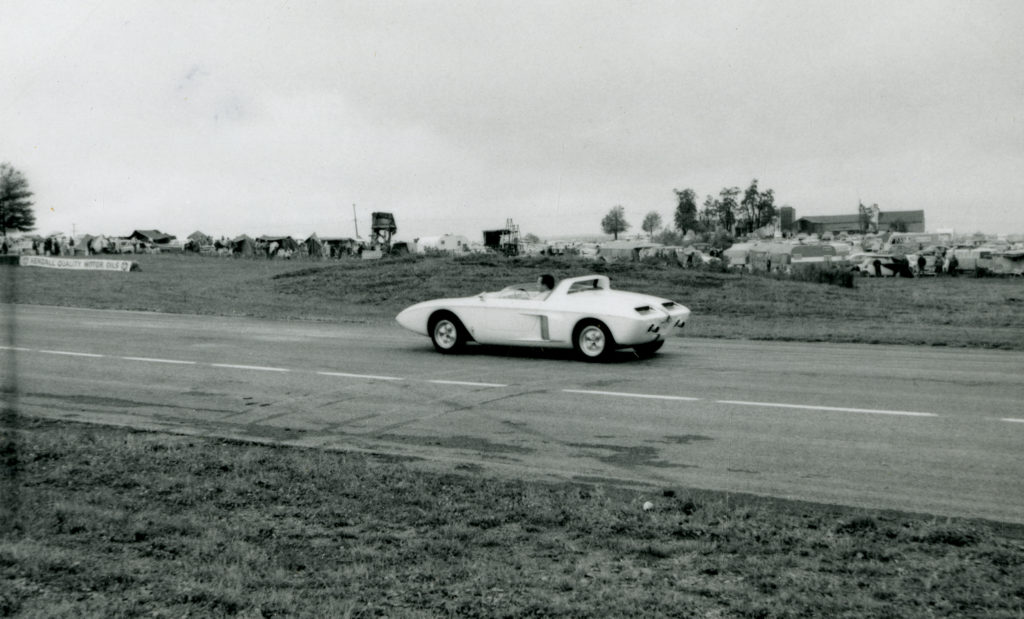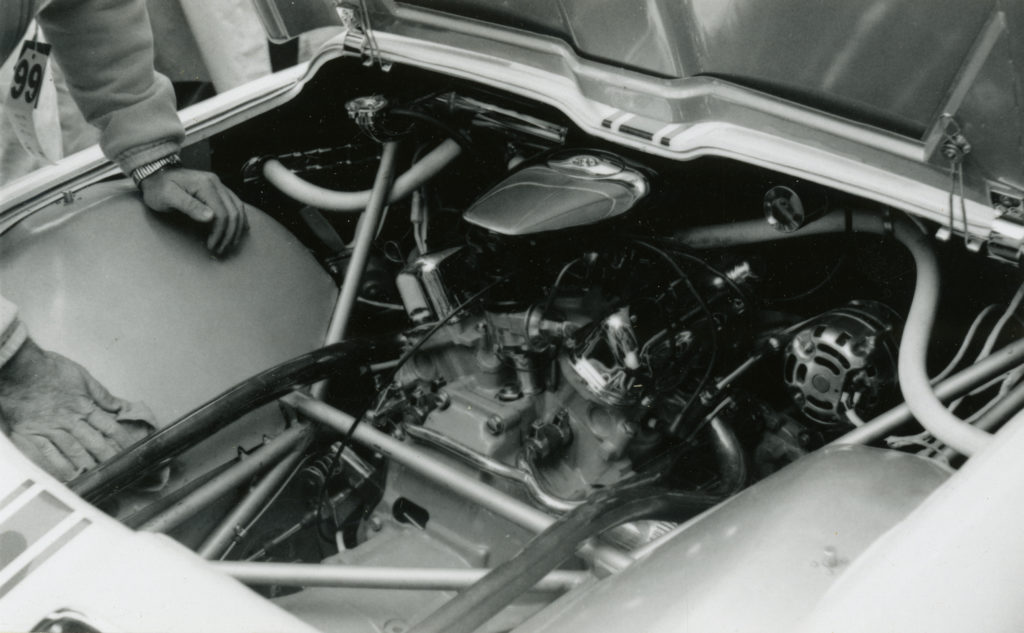This year’s Grand Prix Festival in Watkins Glen honors Mustang, the original American “pony car.” Ford Motor Company developed the experimental version of the Mustang in 1962 to test new innovations in design and styling, later producing the wildly successful street car that would carry the name and the model’s popularity through almost six decades.
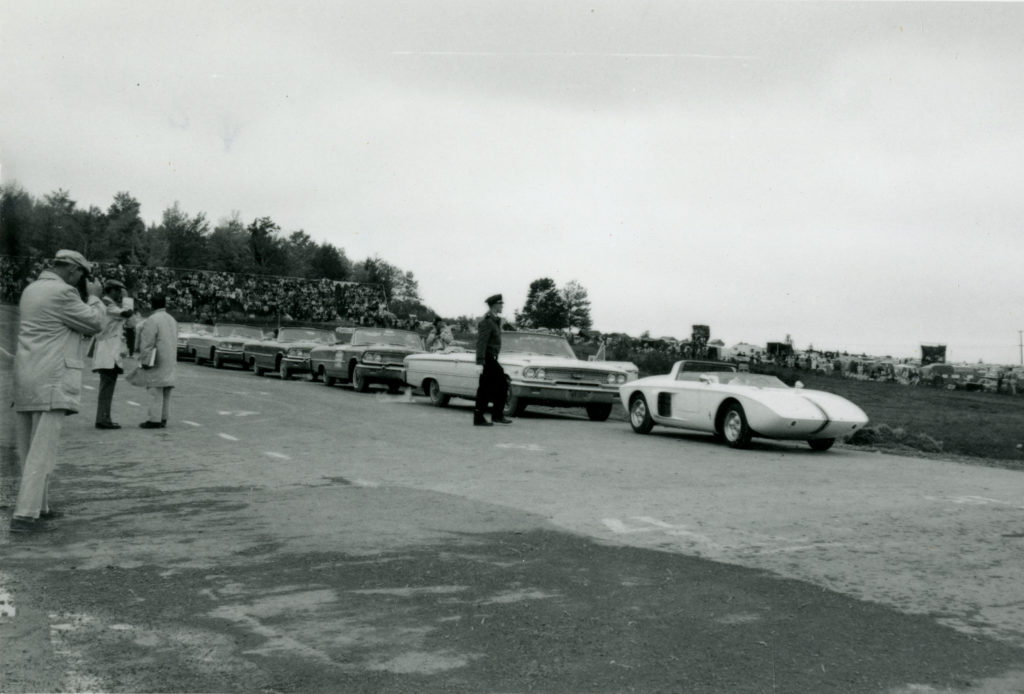
The new Ford Mustang prototype leads the Drivers’ Parade of Honor at the United States Grand Prix at Watkins Glen in 1962.
Ford introduced the two-seater, prototype Mustang roadster at the United States Grand Prix in October of 1962. The accompanying photographs from the Bill & Ginny Close collection in the Center’s archive depict the new Mustang leading the drivers’ parade, in the pits, and on the track. One shows the 60-degree, mid-mounted V-4 1500cc Cardinal engine with four-speed transaxle. Course marshal Charles Lytle with Sir Stirling Moss, the race’s honorary starter, riding shotgun, led the parade of Ford Galaxies carrying Formula One drivers from around the world. Popular racer Dan Gurney put the Mustang through its paces on the road course, showing off the design and performance while achieving speeds of over 100 m.p.h., in a non-competitive demonstration drive.
The prototype’s development by a talented group of company engineers and stylists marked Ford’s renewed interest in racing and performance. Its debut heralded the success of Ford’s “Total Performance” program, a commitment of corporate resources to motorsports competition that would allow the manufacturer to dominate racing in the 1960s. It tested the feasibility of an affordable, sportier car in a growing market of eager, young buyers.
The fully-functional, hand-built prototype or Mustang I varied greatly from later models. The “startling,” one-of-a-kind sportscar was fabricated by Troutman & Barnes, a race car shop in Culver City, California. Weighing in at 1200 pounds, it was aluminum bodied, tube framed, with an independent suspension, front disk brakes, and a 90-inch wheelbase. It had a built-in roll bar and 13-inch cast magnesium wheels. It was liveried in American racing colors of blue and white, with the famous running pony emblem on the hood.
This Ford Motor Company film about the creation of the prototype narrates the process from the drawing of the original design, constructing the frame, showing the body as it is sculpted in clay and fabricated in fiberglass and aluminum, through the testing process, and its public debut at Watkins Glen. Bill France Sr. makes a cameo appearance watching the Mustang’s run at Daytona.
The original prototype is preserved as part of the automobile collection at the Henry Ford Museum in Dearborn, Michigan.
Ford Motor Company partnered with the Watkins Glen Grand Prix Corporation, the track’s managers, from the first Formula One race in 1961. The Glen was used as a venue for publicity events for the manufacturer. The Mustang II, a 4-seater concept car, debuted at the United States Grand Prix in 1963, the year after the experimental version was first introduced. Mustang was the official car of the Glen from 1964 to 1967, with 23 Mustangs made available for the use of Formula One teams during their visits. Mustangs paced races at Watkins and the Indianapolis 500.
The production model, four-seater Mustang coupe launched in April 1964 at the New York World’s Fair sold 1 million cars in less than two years, the most successful launch for Ford since the Model A in 1927. They were the hottest thing around and virtually unobtainable the first summer with as much as a 3-month backlog on orders. Initial research revealed more than half of Mustang buyers in 1964 were between 20 and 34 years of age and 40% made $5000 to $10,000 per year at a time when the median family income in the United States was $6,600. With the launch of the Mustang, Ford successfully targeted a younger, single, female demographic, providing an affordable, compact coupe with style and performance.
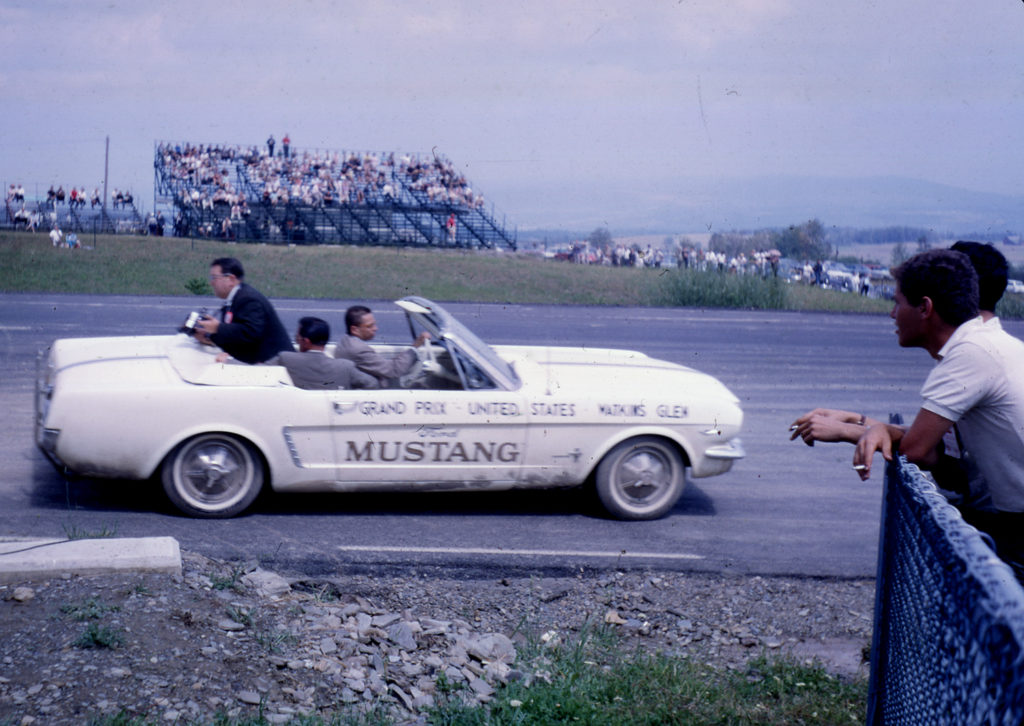
Driven by Cameron Argetsinger, this 1964 Mustang served as the official pace car during the Glen 500 and other local races.
Come to the Festival to celebrate Mustangs of all eras. Enjoy the appealing personality of the early models described by the manufacturer as “demure enough for church-going, racy enough for the dragstrip, modish enough for the country club.”


